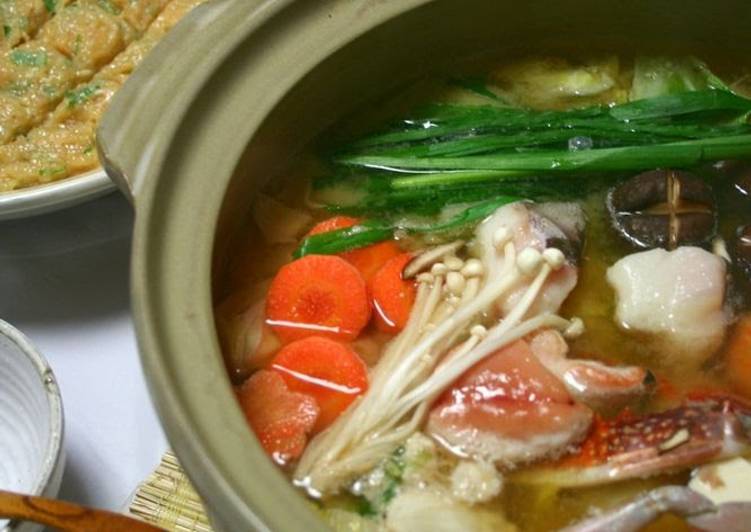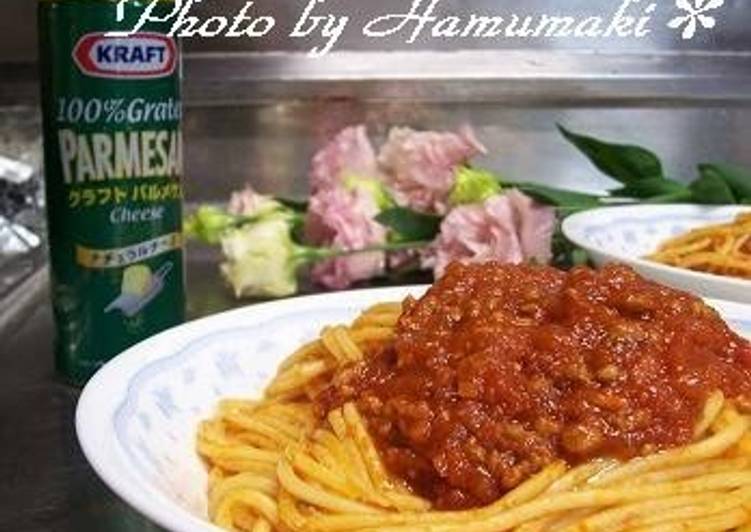
Hey everyone, it’s me, Dave, welcome to our recipe site. Today, I’m gonna show you how to prepare a special dish, miso-flavored chanko nabe (hot pot). One of my favorites. For mine, I’m gonna make it a bit unique. This is gonna smell and look delicious.
Chanko Nabe or Sumo Stew is a robust hot pot filled with all kinds of vegetables and tons of protein in a rich dashi and chicken broth. This well-balanced meal is traditionally eaten by sumo wrestlers but also enjoyed at home or some restaurants. Spring is here and why am I still sharing a hot pot recipe?
Miso-flavored Chanko Nabe (Hot Pot) is one of the most well liked of current trending meals on earth. It is simple, it’s fast, it tastes yummy. It is enjoyed by millions daily. They are nice and they look wonderful. Miso-flavored Chanko Nabe (Hot Pot) is something which I’ve loved my entire life.
To get started with this particular recipe, we must prepare a few ingredients. You can have miso-flavored chanko nabe (hot pot) using 21 ingredients and 5 steps. Here is how you can achieve that.
The ingredients needed to make Miso-flavored Chanko Nabe (Hot Pot):
- Make ready [Miso broth]
- Take 1600 ml Dashi stock (kombu, bonito base)
- Prepare 1 clove/ piece each Garlic, ginger
- Take 1 cube 〇 Soup stock
- Prepare 50 ml 〇 Sake
- Prepare 6 tbsp 〇 Miso
- Take 50 ml 〇 Mirin
- Get 1 dash 〇 Salt
- Prepare [Tsukune]
- Take 300 grams Ground chicken
- Get 1 clove/ piece Garlic, Ginger (grated)
- Get 3 tbsp Japanese leeks (finely chopped)
- Get 1 small Egg
- Get 1 tbsp Katakuriko
- Get 1 tbsp Miso
- Take 1 Sesame oil
- Make ready [Ingredients for the hot pot]
- Take 1 Salmon, cod, shrimp, crab
- Prepare 1 Cabbage, carrots, chives
- Take 1 Shimeji mushrooms, shiitake mushrooms, enoki mushrooms
- Make ready 1 Tofu
Chanko Nabe is a very popular style of hot pot dish in Japan. A lot of vegetables and meat can be cooked in seasoned broth at the same time at Chanko Nabe is a well known food for Sumo wrestlers in Japan. If Japanese people are asked what Sumo wrestlers eat, probably almost all will answer. Cooking is done at the table.
Instructions to make Miso-flavored Chanko Nabe (Hot Pot):
- [Prep the vegetables and fish] Cut the fish, vegetables, and tofu into bite-sized pieces. Crush the garlic and thinly slice the ginger. Make a cut in the center of the cabbage as shown in the photo and then cut into pieces of equal size.
- [Make the tsukune] Finely chop the Japanese leek and combine with all the ingredients for the tsukune. Knead well until the mixture becomes sticky.
- Add water and kombu to the pot and heat. When it starts to simmer and the kombu floats to the top, remove the kombu and add a dashi stock bag filled with bonito flakes, garlic and ginger. Bring to a boil again and simmer for 2 -3 minutes over low heat. Squeeze the liquid out of the dashi stock bag and remove. Add the 〇 seasonings.
- Lay the core pieces of cabbage in the bottom of the pot.
- Bring to a boil and add the fish and vegetables. When cooked through, it's done. Enjoy! The tsukune mixture can be dropped into the pot with a spoon while the broth is boiling.
Very warm and comforting on a cold day. Delicious Hoto Nabe (Flat Noodles Miso Hot Pot) with kabocha squash, pork, napa cabbage, enoki… However, Chanko Nabe is a pretty popular type of hot pot for people in general as well. It's arguably one of the best winter foods in Japan. Have you heard of the Chanko Nabe? Most people associate this Japanese dish with Sumo culture as it is an important part of the Japanese traditional wrestlers'.
So that’s going to wrap this up for this exceptional food miso-flavored chanko nabe (hot pot) recipe. Thank you very much for your time. I’m confident you can make this at home. There’s gonna be more interesting food at home recipes coming up. Don’t forget to save this page on your browser, and share it to your family, friends and colleague. Thanks again for reading. Go on get cooking!

